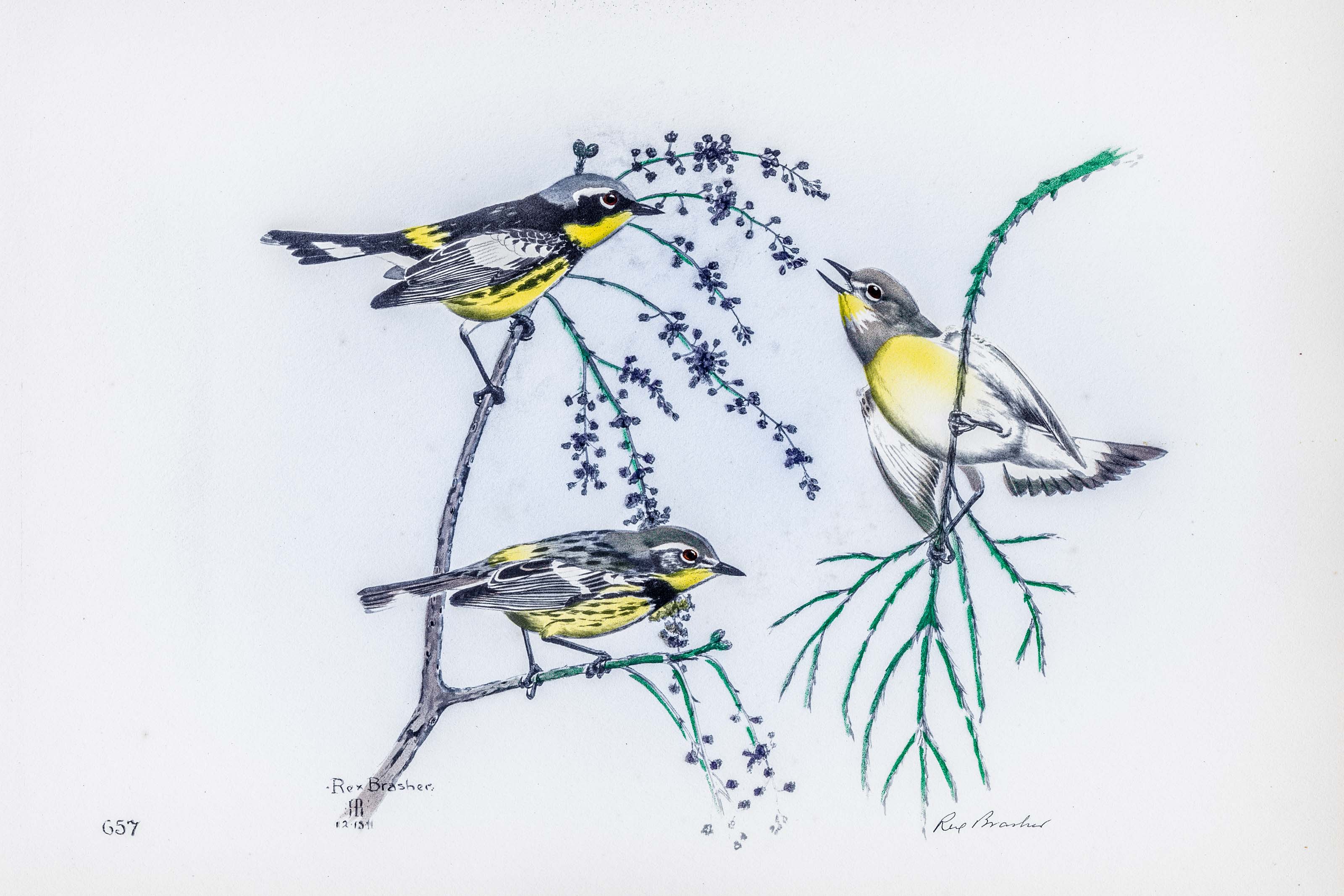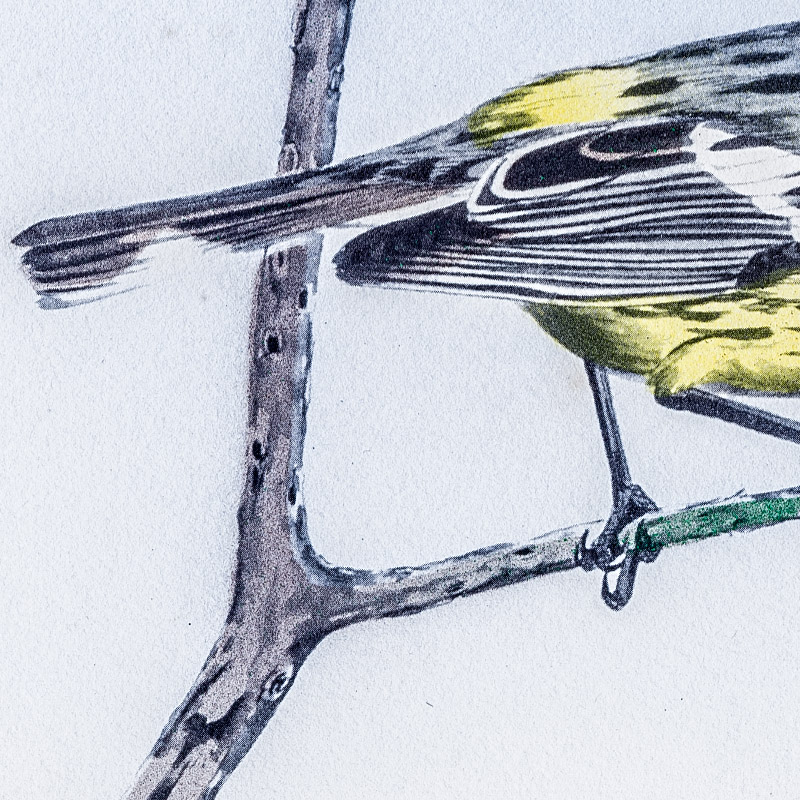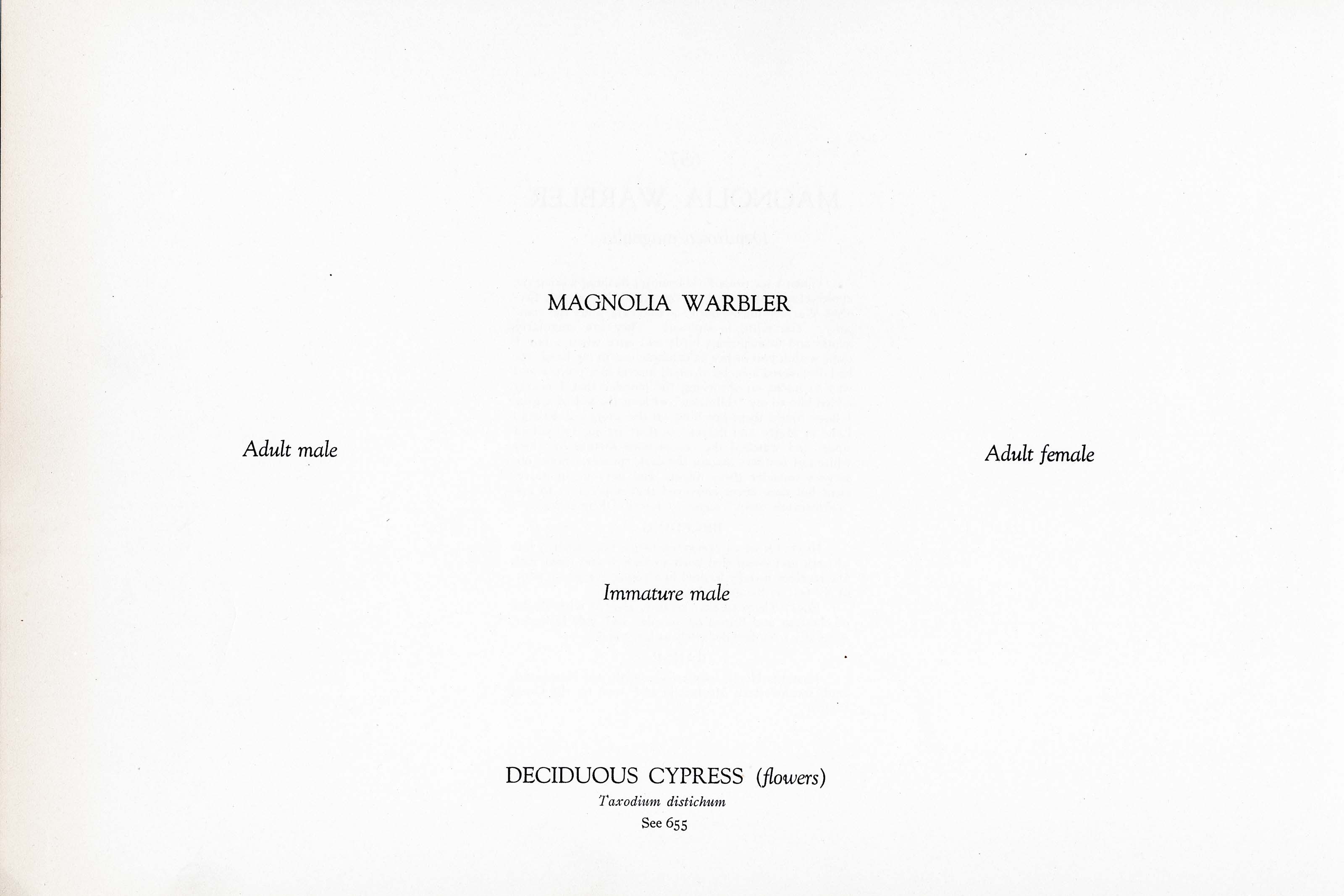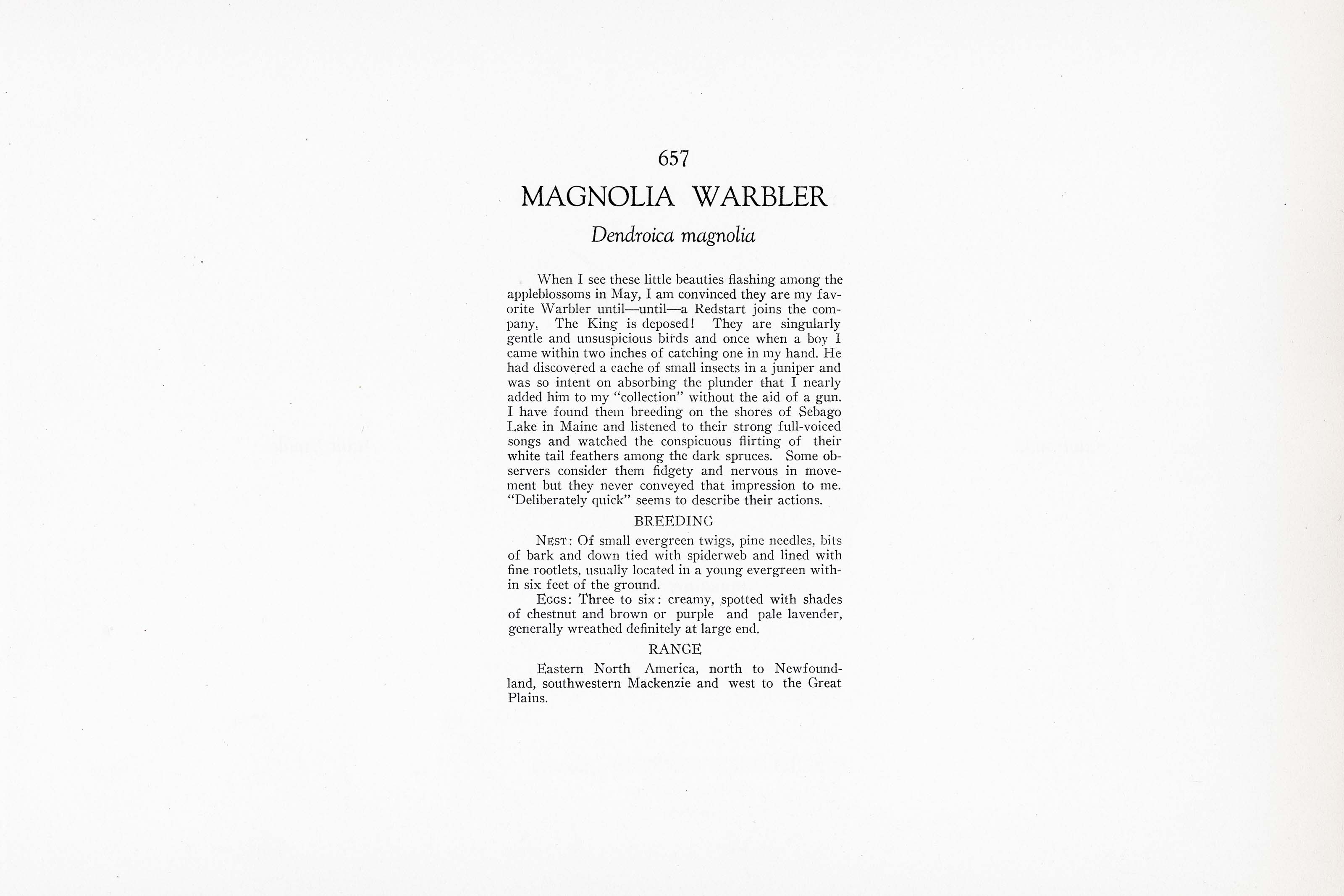






1911
1930
11
657
A team of dedicated board members, volunteers, and student interns has published every page in Volume 9. This volume includes 360 images of paintings and lyrical descriptions of birds, now available online for everyone to enjoy anywhere in the world. This is a monumental task. Each volume requires approximately 400 hours to photograph, edit, transcribe, catalog, and publish online. We need your support to complete this work.
If you're tech-savvy, have a good eye, are meticulous with details, and love structured data, please consider volunteering by emailing us at hello@rexbrasher.org.
We encourage all bird lovers and supporters to consider a monetary donation to support our mission to make Rex's work available for everyone. You can provide a one-time or recurring donation online.
When I see these little beauties flashing among the appleblossoms in May, I am convinced they are my favorite Warbler until — until — a Redstart joins the company. The King is deposed! They are singularly gentle and unsuspicious birds and once when a boy I came within two inches of catching one in my hand. He had discovered a cache of small insects in a juniper and was so intent on absorbing the plunder that I nearly added him to my "collection" without the aid of a gun. I have found them breeding on the shores of Sebago Lake in Maine and listened to their strong full-voiced songs and watched the conspicuous flirting of their white tail feathers among the dark spruces. Some observers consider them fidgety and nervous in movement but they never conveyed that impression to me. "Deliberately quick" seems to describe their actions.
NEST: Of small evergreen twigs, pine needles, bits of bark and down tied with spiderweb and lined with fine rootlets, usually located in a young evergreen within six feet of the ground.
EGGS: Three to six: creamy, spotted with shades of chestnut and brown or purple and pale lavender, generally wreathed definitely at large end.
Eastern North America, north to Newfoundland, southwestern Mackenzie and west to the Great Plains.
A tree up to 150 feet high, with a trunk sometimes 10 feet in diameter; distributed in submerged swamp areas from Maryland to northern Florida and along the Gulf Coast to Texas.